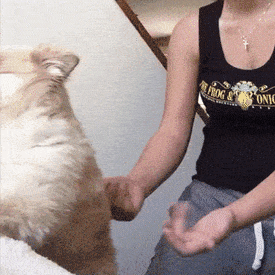Ask around and you’ll quickly learn that most teens think the first few days of school are a complete waste of time. “All we do are the same dumb games we did in elementary school!” Or, “It’s just seven periods of my teachers reading me the syllabus!” Both are common complaints I’ve heard from middle and high school students. So how can we make those first few days meaningful? Keep reading, because here are some real ways to build classroom community while getting to know your students in fun and meaningful ways. Secondary students are like sharks. Well, not exactly—they can’t smell prey from thousands of feet away, but they can smell stale lesson plans with shocking speed and accuracy. Instead of doing something you’ve done before, start the year by being honest. Tell them that the first few days are about getting to know each other. You want to know them, and they need to know you so you all can have a positive year. Here are a few things you can be honest about with them: Adding movement to your first lessons will help you stand out. There is often so much information to go over in those first few days of class, stations are a great way to cover a bunch of things in a limited amount of time—while still adding some fun and active movement into the day. Stations ideas for secondary classrooms might include: While you may not want to risk a trust-fall activity just yet, physical and mental challenges that can be done in class are often really great ways to learn about your students’ personalities. Who is going to be a leader in class or who might need encouragement to speak up? Look at who treats teammates with respect and take note of who gets frustrated along the way. These are all truly useful pieces of information you will learn when you watch your students work through a challenge. Need some ideas? How about: Putting one student in charge of interviewing another student can be an amazingly powerful tool. As a class, brainstorm a list of unique but revealing questions and then ask each student to pick three or four they’d be comfortable talking about with someone else. Give students time to interview each other and then write a short piece about the peer they interviewed. Have them take a photo of the student to include with the piece. Display these in your room as a way to give students ownership in the class. Possible revealing (but not intimidating) questions might be: This one is often difficult for teachers. We want our classrooms to run smoothly, and we want them to run the way we plan them to run, so handing control over to a pack of middle or high school students can feel like an invitation to chaos. But when we give our students some (managed!) choice over the way their classroom works, it often increases their feeling of agency and control in the room. Since they made the decisions, they’re more invested in making sure those decisions are abided by. Here are just a few things you could try leaving up to the students: Middle and high school students want the additional responsibilities and privileges of being older, more experienced students. When we show them that we recognize that during those important first few days of class, we begin to foster a classroom culture of respect and caring. Taking the time to do activities that are engaging and meaningful will help ensure we have a great school year!
5 Icebreakers for Middle and High School Students That Really Work
1. Honesty will build community.

2. Time to stand—try stations to get things moving.

3. Try a few getting-to-know-you challenges.

4. Try student-to-student interviews.

5. Give your students a say and then sit back and really listen.

Principals Diary
Impress your management with the task list in principals diary.
An Exclusive Diary especially designed for Principals / Directors / Head of Schools / Coordinators / HOD's
Categories
- Academic resources
- Accreditation
- ADHD
- Administration
- Adolescence & Life Skills
- Advertisements
- Articles
- Awards
- Behavioural Problems
- Book Reviews
- Books
- CBSE Sample Papers
- CCE
- Checklist
- Classroom Management
- CTET
- Curriculum
- Duties
- Education and technology
- Educational Institutes
- Emotional Intelligence
- Evaluation and Assessment
- Examinations
- Finance
- Forms and Reports
- general
- Guide and Manuals
- Inclusive Education
- Intelligence
- Interview
- Job Description
- Kindergarten
- Leadership
- Learning barriers
- Legal-Letters
- Legislations and Policies
- Mathematics
- Movie
- news
- Parents
- Photographs
- Power point Presentations
- Primary Class
- Principal
- Professional Development for Teachers
- Report Card
- Research
- RTE
- Rubber Stamps
- Scholarships
- School Accreditation
- School Activities
- School Management Software
- School Prospectus
- Software
- Special educational needs
- Speech
- Sports
- Statistics
- Students
- Teachers
- teaching and learning
- Training
- Uncategorized
- Website Links
- Worksheets
- Workshops
- Write Up
- X Class
- XII Class
Pages
- About us
- Academic websites
- Activate
- Activity
- Advertisements
- Artham Resource Material Join Telegram Group/Channels
- Banner Advertising
- Blog
- Book Writing
- Branding / launch your product
- Contact Us
- Download Sample Papers
- Educators Training – Diploma
- Email Marketing
- Error Page (404)
- Forums
- Groups
- Home Page
- How to get the best from the Online Journal ?
- Jobs
- Lifestream
- Link to us
- Members
- Membership Signup
- Motivate your Students for research
- Post Mailers to Schools
- Print Media
- Printed Journal
- Register
- Research
- School Management Software
- School of Educators
- School Suppliers
- SOE Global Education Awards
- Strategic Alliance
- Strategic Alliance Agreement
- Strategic Alliance Form
- Thank you!
- The Benefits of Branding
- User Profile
- Vishal Jain
- What do you say..
- Workshops
| M | T | W | T | F | S | S |
|---|---|---|---|---|---|---|
| 1 | 2 | |||||
| 3 | 4 | 5 | 6 | 7 | 8 | 9 |
| 10 | 11 | 12 | 13 | 14 | 15 | 16 |
| 17 | 18 | 19 | 20 | 21 | 22 | 23 |
| 24 | 25 | 26 | 27 | 28 | ||


Add a comment